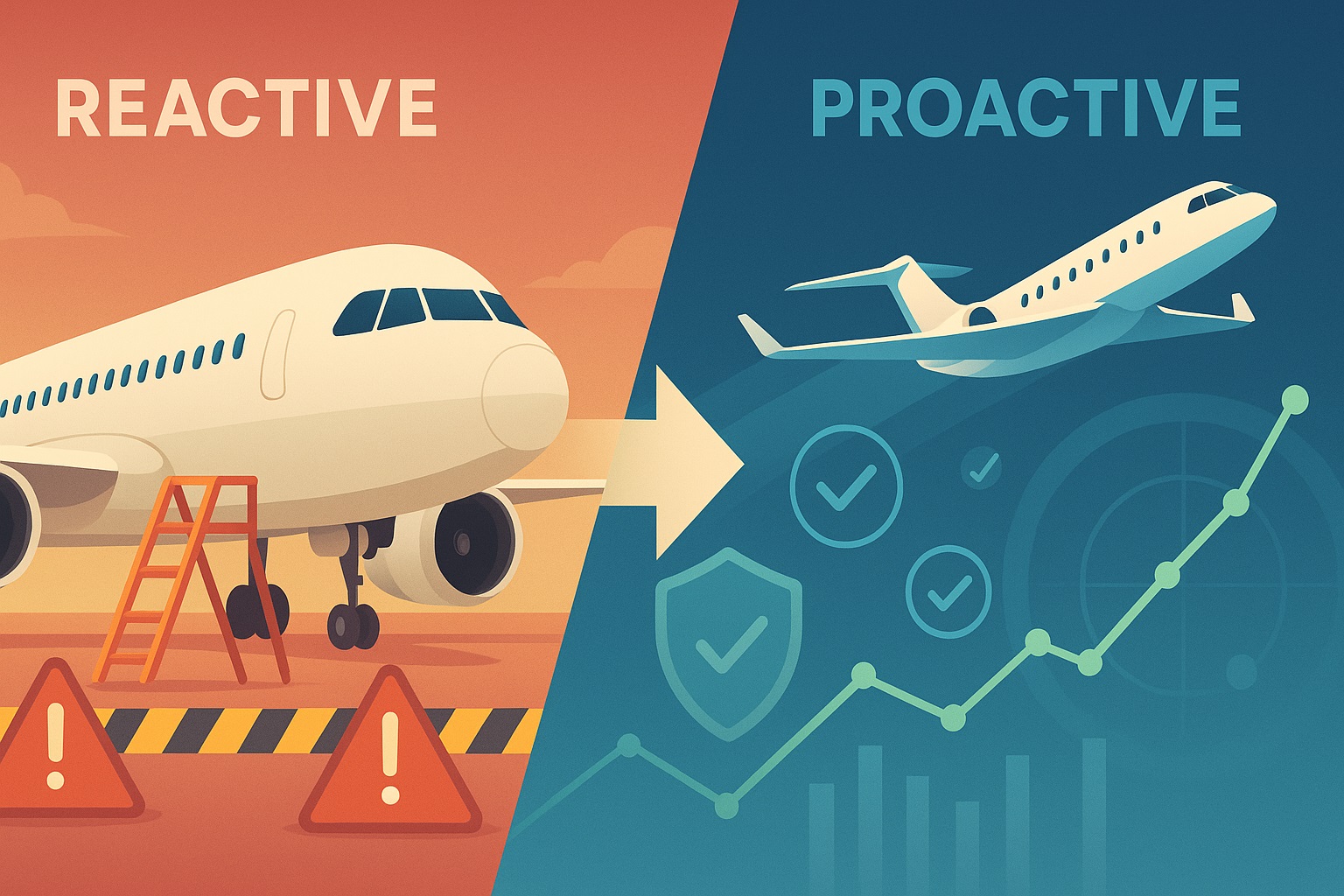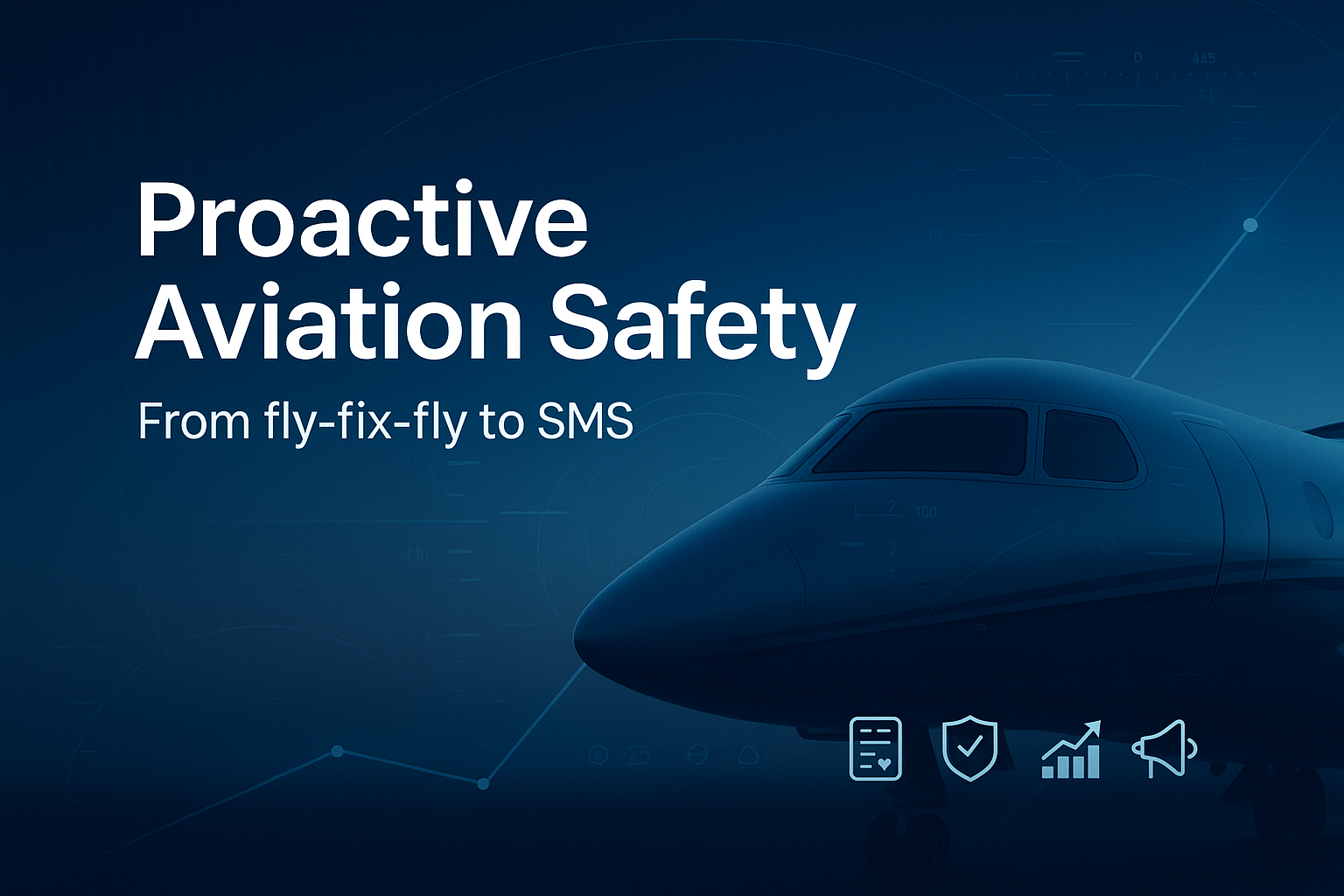From “fly-fix-fly” to “anticipate and prevent”
For decades, aviation treated safety as a repair loop. Something failed, engineers fixed it, and operations continued. This “fly-fix-fly” approach improved hardware, but it relied on incidents to reveal risks. As fleets, airspace, and data complexity grew, that lag became unacceptable. The industry needed to see weak signals early, act sooner, and learn continuously. This article explores why aviation safety moved from reactive to proactive risk management approaches.

Why the shift happened
- Complex systems: Modern aircraft and operations create interactions that are hard to spot after the fact. Prevention works more efficiently than investigation alone.
- Data abundance: Flight data monitoring, advanced equipment, voluntary reports, and maintenance records expose trends long before an accident.
- Cost and uptime: Avoiding events protects lives and lowers delays, diversions, and repair costs.
- Culture change: A just culture encourages reporting, which fuels learning instead of blame.
Enter Safety Management Systems (SMS)
Yes, aviation has shifted to Safety Management Systems. SMS establishes a structured, company-wide approach to identifying and mitigating risk before it harms people or assets. The SMS framework is based on four components:
- Safety policy: Leadership sets direction and resources.
- Safety risk management: Identify hazards, assess risk, and implement controls.
- Safety assurance: Monitor performance with audits, data, and feedback loops.
- Safety promotion: Train people, share lessons, and reinforce just culture.

What proactive safety looks like in practice
- Hazard reporting and trend analysis: Every report matters. Teams analyze events, near-misses, and routine data for patterns.
- Predictive tools: Programs like flight data monitoring reveal unstable approaches, exceedances, or runway risks early.
- Targeted mitigations: Revised SOPs, training tweaks, and design changes address root causes, not symptoms.
- Continuous feedback: Outcomes are measured, then controls are refined. The loop never stops.
Outcomes that matter
Proactive safety reduces serious events, strengthens reliability, and builds trust with regulators and passengers. Most important, it protects crews and customers by treating risk at its source. “Fly-fix-fly” becomes “find-fix-verify,” long before an incident.

